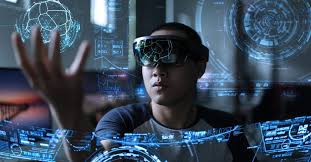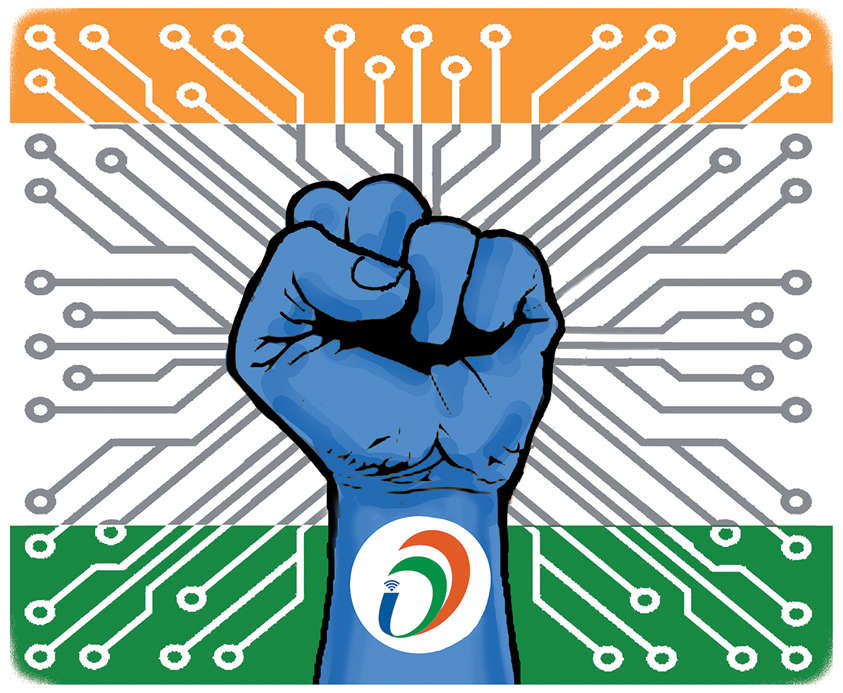
Holographic Displays: Next Step in Entertainment & Education?
Holographic displays represent a major leap forward in visual technology, offering realistic 3D images without glasses. They have vast potential in entertainment, education, healthcare, and communication by creating immersive, interactive experiences. Despite current challenges like cost and hardware size, ongoing advancements promise more accessible, high‑quality holograms. As this technology matures, it could revolutionize how we learn, collaborate, and enjoy media, making digital content far
✨ Raghav Jain

Introduction
Technology has always reshaped how we see, learn, and experience the world. From blackboards to smartboards, from theaters to virtual reality, we’ve come a long way. Now, holographic displays—once the stuff of science fiction—are stepping into reality and offering mind-blowing experiences in both entertainment and education.
Holograms are 3D images that appear to float in space, allowing users to view content from multiple angles without special glasses. These displays merge the digital with the physical, creating immersive experiences that can transform how we learn and engage.
In this article, we'll explore what holographic displays are, how they work, where they're used today, and why they’re poised to revolutionize classrooms, cinemas, museums, and more.The concept of holographic displays, once confined to the fantastical realms of science fiction like Star Wars or Star Trek, is rapidly transitioning into a tangible reality, poised to fundamentally redefine how we interact with digital information. Unlike conventional 2D screens that present flat images, or even stereoscopic 3D displays that require special glasses to create an illusion of depth (often causing eye strain due to vergence-accommodation conflict), a true holographic display projects a volumetric, three-dimensional image that can be viewed from multiple angles without any special eyewear. This means you could walk around a holographic projection and see different perspectives, just as you would with a real physical object. This ability to create a genuine light field, where light rays from the display mimic those from a real object, is what sets true holography apart and makes it such a compelling prospect for the future of visual communication.
The journey to achieve this sophisticated level of display technology has been long and arduous, demanding breakthroughs in optics, material science, computational power, and algorithms. Early forms of holography involved complex laser setups to record and reconstruct static 3D images. Modern advancements, however, are focused on digital holography and electroholography, which aim to create dynamic, real-time 3D projections. This involves complex processes of calculating and displaying interference patterns of light to reconstruct a three-dimensional wavefront. Technologies like spatial light modulators (SLMs), micro-electro-mechanical systems (MEMS) based piston displays, and laser plasma displays are at the cutting edge of this development, each offering different approaches to manipulate light to form these elusive 3D images. While some commercial products already exist that claim to be "holographic" (like spinning LED fan displays or transparent projection screens), these often rely on persistence of vision or clever optical illusions rather than true light-field reconstruction. Nevertheless, they serve as stepping stones, familiarizing the public with the idea of 3D content floating in space. The ultimate goal, however, remains glasses-free, full-parallax, interactive volumetric displays that seamlessly integrate into our environments.
The Transformative Potential in Entertainment:
The entertainment industry stands to be revolutionized by the advent of true holographic displays. Imagine a concert where a deceased legendary musician performs live on stage as a lifelike, three-dimensional projection, visible to every audience member from their unique vantage point, moving and interacting with the stage as if truly present. This is not mere video projection; it's the recreation of a volumetric presence. We've already seen glimpses of this with "hologram" performances by artists like Tupac Shakur and Michael Jackson, though these were largely sophisticated 2D projections onto transparent screens. True holography would elevate this to an entirely new level, offering an unparalleled sense of immersion and presence. Beyond concerts, the implications for film and television are enormous. Characters and scenes could break free from the flat screen, literally floating in the viewer's living room, creating interactive narratives where viewers could explore digital worlds from within.
Gaming is another realm ripe for disruption. Instead of staring at a 2D screen, players could interact with 3D game environments and characters projected into their physical space. Imagine a strategy game played on a holographic tabletop, where miniature armies battle in mid-air, or a role-playing game where fantastical creatures materialize around you. This would bridge the gap between virtual and physical realities, offering a level of immersion that current virtual reality (VR) and augmented reality (AR) headsets, while impressive, cannot fully achieve due to their reliance on head-mounted displays. Furthermore, holographic displays could pave the way for completely new forms of interactive art installations, theme park attractions that truly transport visitors, and even home entertainment systems that transform passive viewing into an active, three-dimensional experience. The ability to see and interact with dynamic 3D content without glasses or bulky equipment is the ultimate dream for immersive entertainment, promising to unlock creative possibilities previously limited by the confines of two dimensions.
Revolutionizing Education and Training:
The impact of holographic displays on education and training could be even more profound, transforming abstract concepts into tangible, interactive experiences. Imagine a biology class where students can walk around a life-sized, anatomically precise holographic model of the human heart, examining its chambers and valves from every angle, or virtually dissecting it without any ethical concerns. In chemistry, complex molecular structures could be projected in 3D, allowing students to manipulate atoms and bonds in real-time, gaining an intuitive understanding of chemical reactions that is impossible with static diagrams. Physics students could visualize invisible forces, like magnetic fields, as three-dimensional patterns in space, or observe celestial mechanics with planets orbiting in a miniature solar system within the classroom.
For subjects like history and archaeology, holographic displays could bring the past to life. Students could explore ancient ruins as they once stood, examine historical artifacts in intricate detail, or even witness pivotal historical events unfold as if they were present. Medical and engineering training would also be revolutionized. Surgeons could practice complex procedures on holographic patient models, engineers could collaborate on 3D schematics of complex machinery, examining prototypes from every angle before physical construction, reducing errors and costs. Remote learning, which became prevalent during the pandemic, could be dramatically enhanced. Imagine a teacher presenting a lesson as a full-bodied hologram in multiple classrooms simultaneously, or students from different parts of the world collaborating on a shared holographic project, manipulating virtual objects together in a shared virtual space. Holographic displays offer a pathway to personalized, immersive, and highly engaging learning experiences that cater to diverse learning styles, moving beyond rote memorization to foster deeper understanding and critical thinking.
Challenges and the Road Ahead:
Despite their immense promise, the widespread adoption of true holographic displays faces significant technical and economic hurdles. One of the primary challenges lies in achieving high resolution and wide viewing angles simultaneously. A true hologram requires an enormous amount of data to reconstruct a light field, far exceeding the capabilities of current display technologies. Generating these complex holographic patterns in real-time, especially for dynamic content, demands immense computational power and high data transfer rates. Miniaturization is another major hurdle, particularly for personal devices like holographic glasses, which require powerful processing units and light manipulation components to fit into a compact and aesthetically pleasing form factor.
Manufacturing complexity is also a key concern. Producing the intricate optical components necessary for true holographic projection is far more challenging and costly than manufacturing conventional flat screens. The field of view (FOV) and depth of field (DOF) are crucial for an immersive experience; current prototypes often have limited FOV, restricting the natural movement of the viewer. Furthermore, achieving full color and high brightness in holographic projections remains an ongoing research area, as many existing methods struggle to reproduce a full spectrum of colors with sufficient luminosity for everyday environments. The cost of production for these cutting-edge displays is currently astronomical, making them largely inaccessible for mass consumer markets. Until these technologies can be scaled and made more affordable, their widespread integration into homes and classrooms will remain a distant dream.
In conclusion, holographic displays are not merely an incremental improvement over existing display technologies; they represent a paradigm shift in how we perceive and interact with digital information. Their potential to create truly immersive experiences in entertainment and to revolutionize learning by making complex concepts tangible is immense. While the journey from laboratory prototypes to mainstream adoption is fraught with significant technical and economic challenges, the ongoing advancements in optics, computing, and material science suggest that we are steadily moving towards a future where volumetric, glasses-free holographic images become an integral part of our daily lives, transforming entertainment into an active, shared experience and education into a vibrant, hands-on exploration of knowledge. The question is not if holographic displays will become the next step, but when they will truly realize their full, transformative potential.
What Are Holographic Displays?
A holographic display creates a three-dimensional image in space using the principles of light diffraction and optics. Unlike traditional 3D screens that need glasses or headsets, holographic displays can be viewed naturally—no equipment needed.
There are different types:
- Pepper’s Ghost Technique: Reflection-based illusion, often used in concerts.
- Volumetric Displays: Project 3D pixels (voxels) into real space.
- Light Field Displays: Show different angles of the same image using light manipulation.
- Laser Plasma Displays: Use lasers to create images that appear to float in mid-air.
How Do Holograms Work?
- Laser Recording
- A laser beam is split into two: one hits the object and bounces to a recording medium, while the other directly hits the medium. Their interference creates a hologram.
- Projection
- Light (or laser) is used to illuminate the hologram, recreating the original 3D image in space.
- Modern Holographic Tech
- Uses digital processing, AI, and motion tracking to project moving, interactive images in real time.
Applications in Entertainment
1. Holograms in Concerts and Live Events
Artists like Tupac Shakur, Michael Jackson, and even India’s PM Modi have appeared as holograms on stage—enabling performances in multiple locations without being physically present.
2. Holographic Gaming
Holographic gaming platforms allow players to interact with 3D characters that pop out of the screen—blending physical space with virtual elements.
3. Cinema & Visual Effects
Imagine movies with scenes that appear in front of you instead of on a flat screen. Studios are experimenting with 360° storytelling using holographic screens.
4. Virtual Avatars & AI Hosts
Digital influencers, AI presenters, or even deceased celebrities are now recreated using holograms for hosting events or storytelling.
Applications in Education
1. Immersive Classrooms
Students can now learn anatomy by examining 3D organs floating in air, or history by “meeting” holographic versions of Mahatma Gandhi or Einstein.
2. Remote Learning with Real Presence
Teachers or experts from around the globe can appear as life-size holograms in classrooms, delivering lessons in real-time with emotional impact.
3. STEM & Medical Training
Medical students can practice surgeries on 3D holographic models. Engineers can rotate and analyze complex machines in mid-air.
4. Language and Arts
Language learners can converse with AI holograms. Art students can view famous sculptures in 3D without flying to Paris or Rome.
Why Holographic Displays Are the Future
1. Enhanced Engagement
3D visuals grab more attention than 2D ones—great for both students and audiences.
2. Realistic Experience
You don’t just watch—you feel the presence of the content, making memory retention stronger.
3. No Screens or Glasses Needed
One of the biggest advantages—natural, shared experiences for everyone in a room.
4. Saves Time & Resources
Virtual field trips, remote expert lectures, or interactive training—without travel or physical materials.
5. Inclusive & Global Reach
One hologram session can reach thousands of classrooms or audiences globally at once.
Daily Ways to Use Holography (Soon to Be Mainstream)
While high-end holography is still evolving, entry-level tools and AR-based holographic apps are already in use.
Morning
- Students can revise with 3D anatomy models or science experiments via AR apps.
- Use holographic video messages or AI teachers for distance learning.
Midday
- Classrooms can hold interactive hologram sessions of historical figures or wildlife.
Evening
- Families can use 3D hologram stories or games on compatible tablets/TVs for fun learning.
- Museums and galleries with holographic tours can make outings more exciting.
Holography in Museums, Retail, and More
- Museums: Bring history to life with moving 3D reenactments.
- Retail: Virtual try-ons using holographic mirrors.
- Tourism: Holographic guides and monuments with storytelling built-in.
- Corporate Training: Visual walkthroughs of machinery, assembly lines, or customer interaction simulations.
- Military & Defense: Tactical planning in 3D, battlefield simulations.
Challenges and Limitations
- Cost
- Advanced holographic systems are expensive and require sophisticated hardware.
- Content Creation
- Needs special software and 3D modeling expertise—still a barrier in schools.
- Space Requirement
- Some volumetric displays require physical space around them.
- Limited Resolution (Currently)
- While improving, most holograms still don’t match the clarity of 4K screens.
- Accessibility
- Mainstream adoption in schools and homes is still a few years away due to affordability.
Myths About Holography: Busted!
“Holograms are just futuristic fantasy.”
→ Not anymore! Holograms are already being used in classrooms, events, and retail.
“You need VR headsets for holograms.”
→ False! Many holograms can be seen without any device or glasses.
“It’s only for big tech companies.”
→ Nope! Startups and even educational institutions are adopting it affordably via mobile AR.
“Holograms can’t be interactive.”
→ Wrong! With sensors and AI, holograms now respond to touch, gestures, and voice.
“Holograms are just fancy visuals.”
→ Holography enhances learning, decision-making, and emotional connection.
Conclusion
Holographic displays are no longer science fiction—they’re the next frontier in learning and entertainment. Whether you’re a student trying to understand complex topics or an audience member watching a concert, holography offers an experience that is unforgettable, engaging, and incredibly real.
As the technology becomes more accessible, we can expect smarter classrooms, more immersive entertainment, and interactive virtual worlds—all without goggles, wires, or borders.
The future of learning and entertainment is floating right in front of us—literally.
So whether you're a teacher, parent, student, or content creator—start exploring holographic tools. Because the next step in engagement isn’t on screen… it’s in the air.
Q&A Section
Q1:- What are holographic displays and how do they work?
Ans :- Holographic displays create three-dimensional images by projecting light fields that simulate real objects, allowing viewers to see depth and perspective without special glasses.
Q2:- How are holographic displays transforming the entertainment industry?
Ans :- They enable immersive experiences in concerts, movies, and gaming by projecting lifelike 3D visuals that can interact with audiences in real time.
Q3:- In what ways can holographic displays enhance education and learning?
Ans :- They bring abstract concepts to life by enabling 3D visualization of complex subjects like anatomy, architecture, and astronomy, improving engagement and retention.
Q4:- What technologies underpin modern holographic displays?
Ans :- Advanced lasers, spatial light modulators, and computational imaging algorithms work together to render detailed, dynamic 3D holograms.
Q5:- How accessible are holographic displays currently for consumers and institutions?
Ans :- While commercial use is growing in museums and events, consumer‑level holographic devices are still emerging due to cost and technical challenges.
Q6:- What challenges do holographic displays face for widespread adoption?
Ans :- High production costs, limited resolution, bulky hardware, and content creation difficulties remain key barriers.
Q7:- How can holographic displays improve remote communication and collaboration?
Ans :- They can project realistic 3D representations of people and objects, creating more natural, immersive virtual meetings and teamwork experiences.
Q8:- What role could holographic displays play in medical training and healthcare?
Ans :- By enabling detailed 3D visualization of anatomy and surgical simulations, holograms help students practice and doctors plan procedures with greater precision.
Q9:- Are holographic displays environmentally sustainable compared to other display technologies?
Ans :- They may reduce the need for physical models and travel but currently require significant energy and specialized materials, needing improvements for sustainability.
Q10:- What future developments can we expect in holographic display technology?
Ans :- Future innovations aim at higher resolution, lighter portable devices, interactive holograms, and integration with AI for smarter content adaptation.
Similar Articles
Find more relatable content in similar Articles

MakeAnAppLike – Shares trendin..
“MakeAnAppLike is a comprehens.. Read More

Digital India: How Technology ..
Digital India leverages techn.. Read More

Technazo* – Fresh tech trends,..
Technazo is a dynamic platform.. Read More

Daily.dev* – Developer-focused..
Daily.dev is a developer-focus.. Read More
Explore Other Categories
Explore many different categories of articles ranging from Gadgets to Security
Smart Devices, Gear & Innovations
Discover in-depth reviews, hands-on experiences, and expert insights on the newest gadgets—from smartphones to smartwatches, headphones, wearables, and everything in between. Stay ahead with the latest in tech gear
Apps That Power Your World
Explore essential mobile and desktop applications across all platforms. From productivity boosters to creative tools, we cover updates, recommendations, and how-tos to make your digital life easier and more efficient.
Tomorrow's Technology, Today's Insights
Dive into the world of emerging technologies, AI breakthroughs, space tech, robotics, and innovations shaping the future. Stay informed on what's next in the evolution of science and technology.
Protecting You in a Digital Age
Learn how to secure your data, protect your privacy, and understand the latest in online threats. We break down complex cybersecurity topics into practical advice for everyday users and professionals alike.
© 2025 Copyrights by rTechnology. All Rights Reserved.